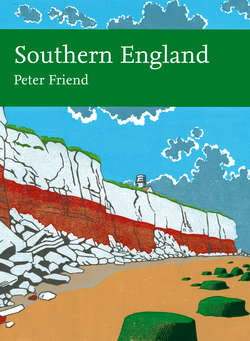Читать книгу Southern England - Peter Friend - Страница 16
THE LAST 30,000 YEARS TIMESCALE AND RECENT MODIFICATION
ОглавлениеThe timescale shown in Figure 19 covers a period during which various episodes have changed the landscapes of Southern England, creating our present-day world. These episodes include the dramatic rise in sea level and landward movement of the coastline caused by the warming of the climate following the last cold episode of the Ice Age. They also include the progressive changing of the countryside by people, leading up to the domination of some landscapes by man-made features.
FIG 19. Time divisions for the last 30,000 years (Late Pleistocene to Holocene).
| Time Division | Years Before Present |
|---|---|
| Windermere Interstadial | 13,000–11,000 |
| Loch Lomond Stadial | 11,000–10,000 |
| Flandrian (Holocene) | 10,000-present |
| Mesolithic | 11,000–7,000 |
| Neolithic | 7,000–4,150 |
| Bronze Age | 4,150–2,750 |
| Iron Age | 2,750–1,950 |
| Roman | 1,950–1,600 |
The last 30,000 years have been warm, on average, relative to the previous 2 million years of the Ice Age. However, the higher level of detail available in this timescale makes it clear that climate change has not been one of uniform warming during this period. Short periods of colder climate, temporarily involving ice-sheet growth in the north of Britain (sometimes called stadials) have alternated with short periods of warmer climate (referred to as interstadials).
